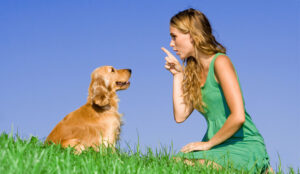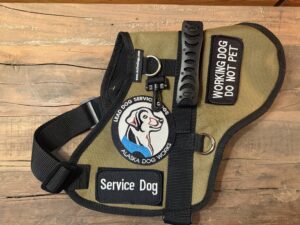In the pantheon of Italian working dogs, the Cane di Oropa stands out as a rare and venerable guardian breed known for steadfast loyalty, protective instinct, and a commanding presence. With roots tied to the mountains and villages of northern Italy, this breed embodies the tradition of shepherds and cattle herders who relied on a loyal canine partner to safeguard stock, homes, and family. While not as widely recognized as some of Italy’s other guard dogs, the Cane di Oropa offers a compelling combination of resilience, intelligence, and a calm, dignified temperament that endears it to experienced owners who value steadfast companionship and disciplined guardianship.
A distinct origin and purpose
The Cane di Oropa traces its lineage to the rugged landscapes around the town of Oropa in the Piedmont region. Though records are understandably sparse and the breed does not enjoy the same level of global recognition as more widely documented guardians, breeders and historians describe a dog shaped by practical needs: a large, robust animal capable of confronting threats, yet sensitive enough to be a trusted family member. Traditionally deployed to guard homesteads, herd cattle, and protect villages from predators or trespassers, the Cane di Oropa is a working dog with a deep reservoir of courage, resilience, and situational awareness.
What makes the Cane di Oropa distinctive
- Size and build: The Cane di Oropa typically presents a strong, muscular frame designed for endurance and protective action. It often carries a substantial girth, a broad chest, and an imposing stance that communicates quiet authority. Despite the formidable presence, the breed can move with surprising agility when the situation calls for it.
- Coat and appearance: The coat is usually dense and weather-resistant, reflecting its mountain heritage. Coloration can vary, but dogs commonly display solid tones or brindle patterns, sometimes with darker facial markings that contribute to a noble, watchful look. The coat’s texture and length require regular grooming, especially during seasonal shedding cycles.
- Temperament: At its best, the Cane di Oropa is calm, steady, and extremely loyal. It tends to form a deep bond with its family, offering a protective, watchful eye without unnecessary agitation. The breed often displays a thoughtful, calculating approach to risk, preferring to assess a situation before taking action. Adept at reading human cues, a well-socialized Cane di Oropa responds to training with focus and a willingness to work, which makes it a reliable guardian when paired with a confident, experienced handler.
- Protective instinct: The Cane di Oropa is a true guardian dog, not a hyper-reactive hound. Its protective drive is proportionate and situational, designed to deter threats rather than to overwhelm with constant barking or indiscriminate aggression. This quality makes it less likely to be overly reactive in typical urban environments, provided that it has proper socialization and ongoing training.
Choosing the right home and environment
A Cane di Oropa thrives in households that honor its needs for space, mental stimulation, and consistent leadership. This is not a breed that typically excels in small apartments or with owners who cannot commit to regular training and socialization. Ideal settings include:
- A home with secure fencing and a safe outdoor space where the dog can patrol, observe, and relax in its own time.
- An active household where the dog has opportunities for structured exercise, daily walks, and purposeful tasks that engage its guarding and problem-solving instincts.
- An owner with experience in handling powerful working dogs, who can set clear boundaries, provide positive reinforcement-based training, and establish themselves as a calm, confident leader.
Socialization and training: keys to harmony
Early, consistent socialization is essential for a Cane di Oropa. From puppyhood, exposure to a variety of people, animals, environments, and everyday situations helps cultivate a well-adjusted guardian who can differentiate between legitimate threats and benign events. Training should be based on positive reinforcement, clarity, and patience. Consider these guidelines:
- Establish leadership with consistency: Strong, predictable boundaries help the dog understand its role within the family unit. This does not mean harsh punishment; it means clear expectations, dependable routines, and fair correction when required.
- Focus on impulse control: The Cane di Oropa benefits from exercises that promote restraint, such as sit-stay, heel, and impulse-control challenges. These practices help the dog remain composed in potentially tense situations.
- Work on resource guarding and fence-line alerts: Guarding behaviors can be managed with carefully structured exposure and redirection, ensuring that the dog can alert without becoming dangerous or aggressive toward family members or visitors.
- Exposure to strangers and environments: Regular, controlled introductions to new people, vehicles, noises, and urban settings help prevent overreaction. A confident handler can teach the dog to assess rather than automatically react.
- Partner approach to training: A dog of this caliber responds best to patient, steady coaching. Short, frequent training sessions typically outperform long, sporadic ones. Seek a trainer experienced with large guardian breeds to tailor a program to your dog’s personality.
Exercise, mental stimulation, and daily life
The Cane di Oropa is not a “one-and-done” training prospect. Its exercise and mental stimulation needs are ongoing and integral to its health and happiness.
- Physical activity: Regular, substantial exercise is essential. Daily walks, combined with play sessions, can help prevent boredom-induced behaviors. Off-leash exercise should be considered only in secure spaces and under control, given the breed’s guarding instincts.
- Mental challenges: Puzzle toys, scent games, and tasks that require decision-making mimic the dog’s natural job of evaluating environments and potential threats. This breed often enjoys problem-solving activities that engage its intelligence.
- Guarding considerations: While protective, the Cane di Oropa should never be allowed to become a nuisance barker or an aggressive nuisance. Training that channels its guarding energy into alerting and controlled responses rather than unchecked aggression is crucial.
- Living pace and routine: A steady daily rhythm helps the dog feel secure. Predictable feeding times, training sessions, and quiet rest periods reduce anxiety and support better behavior.
Grooming, health, and care
Caring for the Cane di Oropa blends practical needs with a mindful approach to aging and vitality.
- Grooming: The coat requires regular brushing to manage shedding and to keep the skin healthy under the dense fur. Seasonal shedding can be pronounced, so more frequent grooming sessions during those times are beneficial. Check ears for wax buildup and inspect nails regularly to avoid overgrowth.
- Health considerations: Like many large breeds, the Cane di Oropa can be prone to hip or joint issues, including hip dysplasia, especially as it ages. Regular veterinary checkups, a balanced diet, and appropriate exercise help maintain joint health. Dental care is important for overall well-being, as is monitoring for signs of obesity, which can strain joints and impact mobility.
- Diet and weight management: Feed a high-quality diet appropriate for large breeds, tailored to the dog’s age, activity level, and health status. Obesity can exacerbate joint problems, so portion control and mindful feeding are essential.
- Veterinary relationship: Establish a relationship with a veterinarian who understands large guardian breeds. Preventive care, vaccinations, parasite control, and timely medical interventions are key to a long, fulfilling life.
Lifespan, temperament, and compatibility
- Lifespan: Cane di Oropa dogs typically live a robust life for a guardian breed, with lifespans commonly ranging into the mid-teens with good care. Regular veterinary visits and a healthy lifestyle support longevity.
- Family compatibility: When raised with care, the Cane di Oropa can become a deeply devoted family member. It tends to bond with children and adults who treat it with respect, kindness, and consistent guidance. It is naturally protective of its household, but with proper socialization, it can be a trustworthy, gentle guardian.
- Other pets: Introducing this breed to other dogs and pets requires careful, supervised exposure. Proper management reduces the risk of resource guarding and territorial disputes. In households with multiple pets, a systematic socialization plan and ongoing management are vital.
Adopting and living with a Cane di Oropa
For prospective owners, several factors should guide the decision to welcome a Cane di Oropa into the home:
- Experience level: This is a breed that benefits from an owner who has hands-on experience with large guardians or working dogs. Training intensity, leadership, and consistent routines are essential for success.
- Time and commitment: Daily exercise, mental work, and ongoing socialization require a significant time investment. The dog’s well-being relies on attentive ownership and a steady, structured lifestyle.
- Availability and lineage: As a rarer breed, finding a reputable breeder or rescue with proper health testing and clear lineage is crucial. Avoid marketing schemes that overlook testing or humane sourcing. Connecting with breed clubs or regional guardianship groups can help identify responsible sources.
- Ethical considerations: Owning a Cane di Oropa means accepting a responsibility toward the breed’s future. Supporting responsible breeders who prioritize health, temperament, and socialization is vital to maintaining the breed’s integrity.
A final perspective on the Cane di Oropa
The Cane di Oropa embodies a blend of mountain resilience, guardian wisdom, and loyal companionship. Its presence signals a home that prizes protection, calm confidence, and a deeply interwoven human-canine partnership. For the right owner, this breed offers a unique blend of quiet dignity and formidable capability—a dog that watches over its family with vigilance, responds to training with intelligence and purpose, and rewards consistent, loving guidance with unwavering devotion.
If you are considering adding a Cane di Oropa to your life, begin with education. Learn about the breed’s history, temperament, and training needs, and connect with experienced guardians who can provide insight and mentorship. Seek out reputable breeders or rescue organizations that emphasize health testing, socialization, and long-term welfare. Invest in a plan that prioritizes early socialization, ongoing training, and regular veterinary care. With the right match, the Cane di Oropa can become not only a capable guardian but a trusted, affectionate member of the family who carries forward a storied Italian tradition with dignity and grace.
Beyond the practicalities, the Cane di Oropa represents a philosophy of guard and grace: a dog built to protect what matters most, yet trained to respond with restraint and care. Its story is a testament to the enduring bond between humans and canines and to the rich tapestry of regional dog heritage that continues to shape guardianship breeds around the world. For enthusiasts, researchers, and prospective owners alike, the Cane di Oropa offers not merely a pet or an asset, but a living legacy—one that asks for commitment, respect, and a partnership that honors its origins and fulfills its promise.










